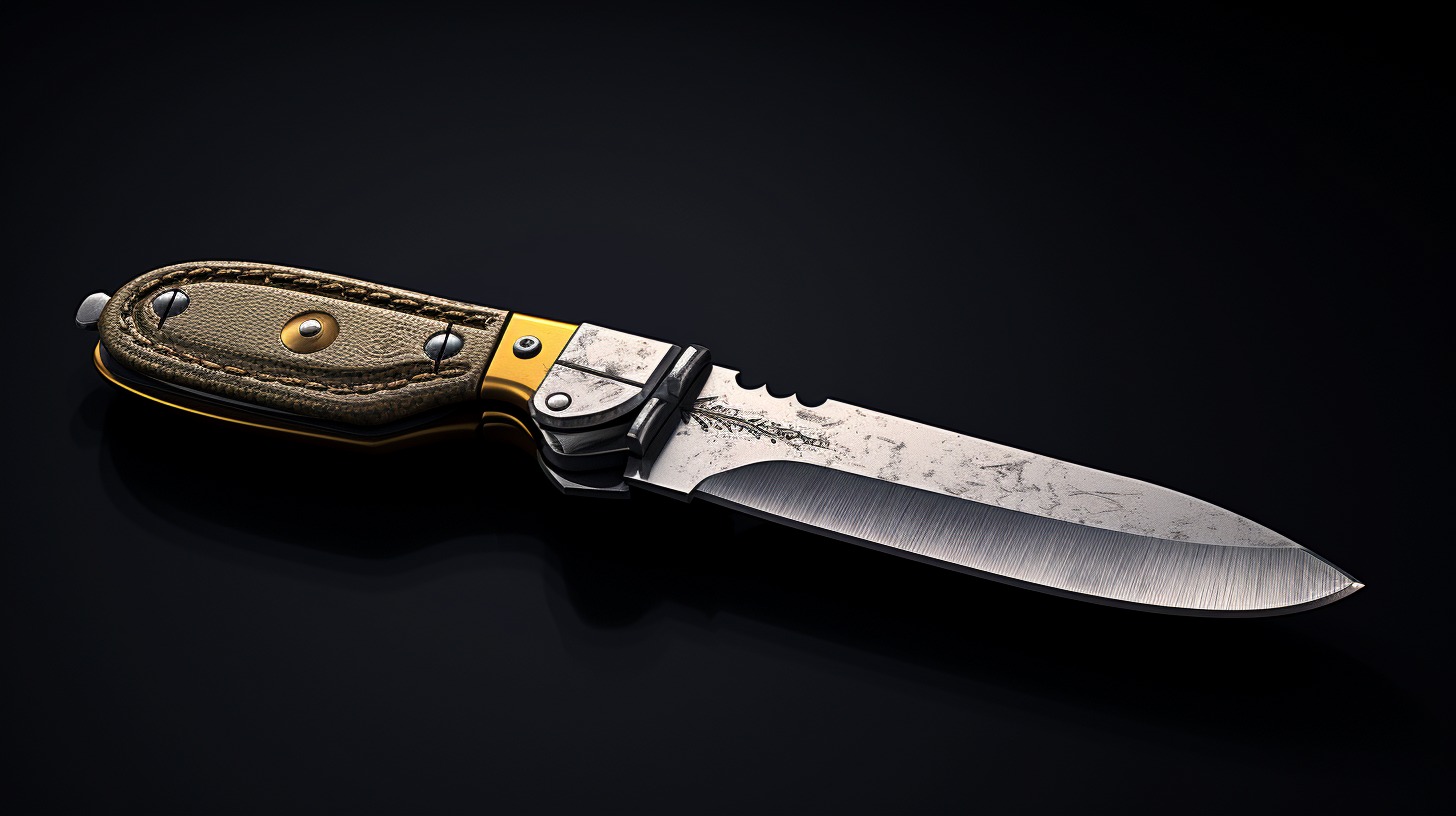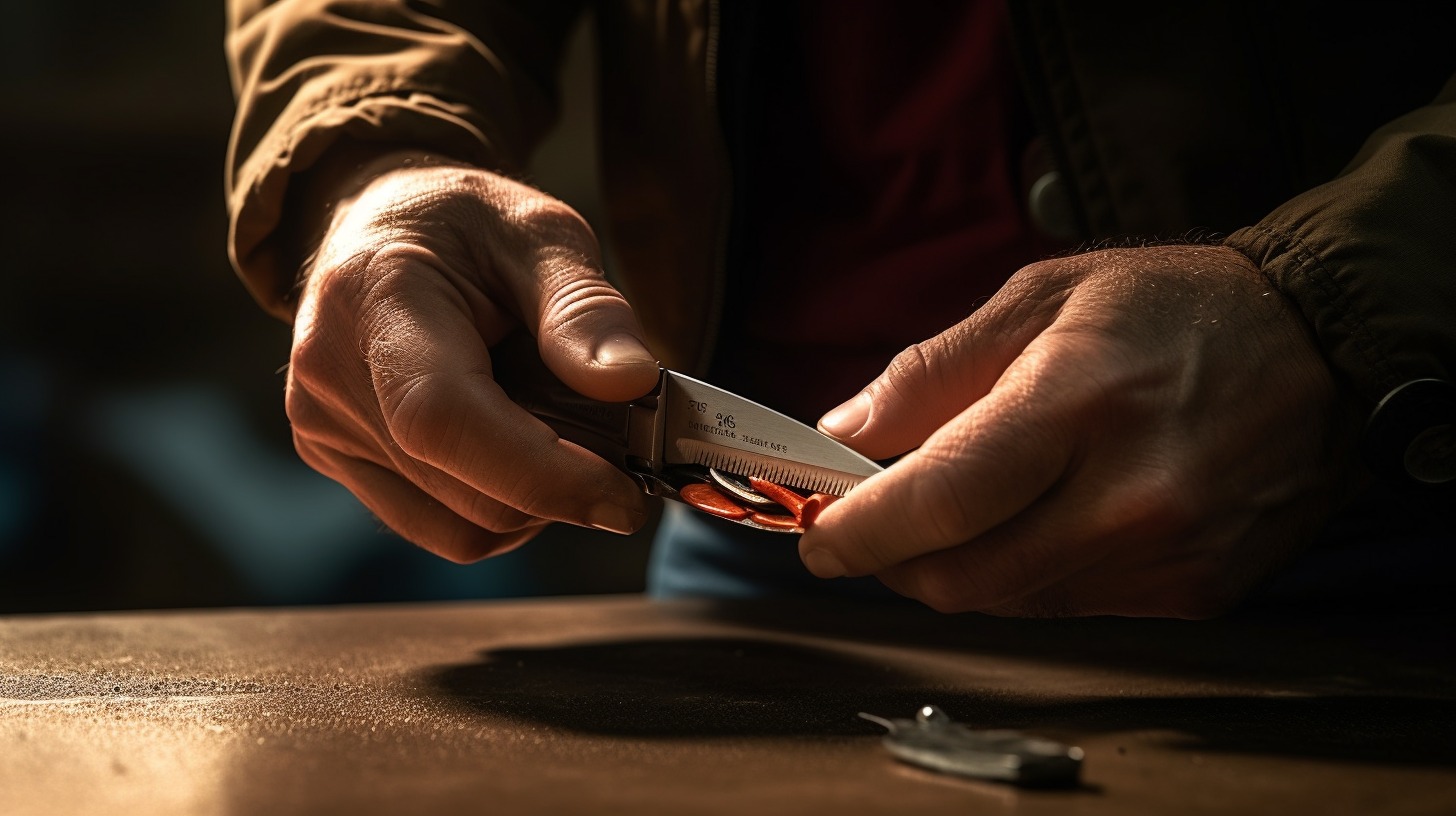I learned the true value of a sharp pocket knife on a weekend wilderness trek where my blade’s keen edge was the difference between a warm fire and a cold night. I guess I had to learn it the hard way.
Keeping your pocket knife sharp is crucial for its performance, safety, and longevity. A well-maintained blade ensures precision and efficiency, reducing the effort required for cutting and minimizing the risk of accidents. So let’s walk through the process that ensures your pocket knife remains as reliable and sharp as the day you first unfolded it.
Choosing the Right Sharpening Tools
Being in the wild requires a set of different skills and tools. Sharpening is one of the most important skills you’ll need on your adventures.
Before starting the sharpening process, selecting the right tools for your hunting knife is a preliminary step that will set the foundation for your success.
Types of Sharpening Stones
| Type of Stone | Characteristics | Best Use Cases |
|---|---|---|
| Whetstones | Various grits available (coarse to ultra-fine) | Fine-tuning, reshaping, and polishing edges |
| Diamond Stones | Durable and abrasive | Quick edge revival, especially for dull blades |
| Ceramic Stones | Smooth and sharp finish | Final edge refinement, achieving a polished edge |
Sharpening Angles and Techniques
A standard angle for pocket knives is around 20 degrees, but this can vary depending on the knife’s purpose. Some multi-tool knives require different angles for sharpening, depending on other tools’ layouts.
A more acute angle results in a sharper but more fragile edge, while a wider angle yields a sturdier edge. Maintaining a consistent angle throughout the sharpening process is crucial for achieving a sharp and symmetrical edge.
Honing vs. Sharpening
- Honing is the act of straightening an already sharp edge and doesn’t remove significant material from the blade. It’s often done with a honing steel or a finer gritstone.
- Sharpening involves removing metal from the blade to create a new edge. It’s required when the knife is dull or has nicks and is done with coarser stones or files.
Preparing Your Knife and Work Area

Ensuring both the knife and the work area are properly prepared is a step that shouldn’t be overlooked. It’s about safety as much as it is about efficacy.
Cleaning the Knife
Begin by cleaning the blade with soapy water to remove any debris or residue, and dry it thoroughly. This ensures a clear view of the edge and prevents slippage during the sharpening process.
Select a stable, flat surface in a well-lit area to set up your sharpening tools. Stability is paramount when working with sharp objects, and good lighting will help you see the edge of the blade more clearly.
Use a sharpening stone holder or a non-slip mat to secure the stone. Wear cut-resistant gloves if available to protect your hands during the sharpening process.
While ensuring your pocket knife is sharp and ready for any outdoor adventure, it’s equally important to consider your choice of shelter, whether it’s a lightweight tarp or a more robust tent, to guarantee a safe and comfortable experience in the wilderness.
The Sharpening Process
Sharpening a pocket knife is a skill that improves with practice. The process can be meditative and rewarding, culminating in a keenly sharp tool that’s a pleasure to use.
Step 1: Establishing the Edge
Start with a coarser grit stone if the knife is particularly dull. Use gentle, consistent strokes while maintaining the angle, moving the blade across the stone in a motion that mimics slicing a thin layer off the top of the stone.
Step 2: Refining the Edge
Progress to finer grit stones, which refine the edge created by the coarser stones. This is where the sharpness really starts to develop, so take your time and maintain consistent pressure and angle.
Testing the Sharpness
To test the edge, carefully run the blade through a piece of paper. A sharp knife should slice through cleanly with little resistance. If the edge fails to cut effectively, return to the finer stone for additional passes.
Maintaining Your Knife
A sharpened knife will only remain sharp with proper care and regular maintenance. This is about preserving your hard work and ensuring your knife is always ready for action.
- Regular Honing: Use a honing rod or a fine stone to straighten the edge before or after each significant use. This keeps the knife at peak performance between more thorough sharpening sessions.
- Proper Storage: Store the pocket knife in a dry place, ideally in a knife block or sheath that prevents the blade from knocking against hard surfaces, which can dull the edge.
- Usage and Care: Use the knife for appropriate tasks – it’s a precision tool, not a pry bar. After use, clean and dry the knife to prevent corrosion, and apply a light coat of oil to the blade to protect it.
Whether it is your knife, your multi-tool, or your portable water filter – it doesn’t matter, you have to take proper care of all of these items so that they remain efficient.
Troubleshooting Common Issues

Even with careful attention to detail, you may encounter some challenges while sharpening your pocket knife. Understanding how to address these can save time and frustration.
1. Uneven Edges
Check that you’re maintaining a consistent angle throughout the sharpening process. Consider using an angle guide if you’re having trouble keeping it steady.
2. Overly Aggressive Sharpening
If you find that you’re removing too much material or creating nicks in the blade, you may be applying too much pressure. Let the stone do the work, using only light to moderate pressure.
3. Failing to Achieve a Sharp Edge
If the knife still isn’t sharp after repeated passes on the fine stone, you may need to go back to a coarser stone to reestablish the edge, especially if there are chips or significant dullness.
FAQs
Can I sharpen my pocket knife with sandpaper if I don’t have a sharpening stone?
Yes, sandpaper can be a makeshift alternative if you don’t have a sharpening stone. You’ll need various grits, starting with a coarser grit and moving to finer ones. It’s best to secure the sandpaper to a flat surface with an adhesive to mimic a stone’s stability.
How often should I sharpen my pocket knife?
The frequency of sharpening depends on usage. For light everyday tasks, sharpening every 2-3 months may suffice. For heavier use, you might need to sharpen it more frequently.
Always hone the edge before use, and sharpen when you notice a decrease in cutting efficiency.
Is oil necessary when using a sharpening stone, and what kind should I use?
Oil isn’t necessary for all stones; it depends on the type. Water stones require water, while oil stones need honing oil to lubricate the surface. Diamond stones and ceramic stones can be used dry, although water can be used with some diamond stones.
Don’t use vegetable or cooking oil; use oils specifically designed for sharpening stones.
Can the same sharpening techniques be applied to serrated pocket knives?
Serrated knives require a different approach. Use a round sharpening rod that fits the serration’s diameter. Sharpen each serration individually, moving the rod in and out while maintaining the correct angle.
A standard flat stone won’t reach the recessed areas of serrations effectively.
How do I know if I’m applying the right amount of pressure when sharpening?
The right pressure is enough to maintain contact and control without forcing the blade into the stone. A good rule of thumb is to use just enough pressure as if you’re comfortably holding a ripe tomato without bruising it.
This usually equates to light to moderate pressure throughout the sharpening process.
What is the most common mistake beginners make when sharpening a pocket knife for the first time?
A common mistake is not maintaining a consistent angle, leading to an uneven edge. Many beginners also switch too soon to finer grits before properly shaping the edge with coarser grits. Patience is key; take your time to establish the edge before moving on to refining it.
The Bottom Line
Keeping your pocket knife sharp is less about the blade and more about readiness—yours. When you’re in the wild you have to be able to manage according to the situation, whether it is starting a fire, opening a can without an opener, or in this case sharpening your knife.
A sharp knife ensures you’re prepared for your next survival adventure or daily task, makes cutting safer, and extends the life of your tool.
By following the sharpening steps outlined, you’ll not only retain the functionality of your pocket knife but also ensure it’s up for any task, at any time. Sharpening is a practical skill that, once mastered, becomes a routine part of your tool maintenance, guaranteeing your pocket knife is always in top condition when you need it.
My name is Casey Harper, and I specialize in wilderness survival, navigation, and first aid. With over 12 years of experience as a wilderness survival instructor, I have had the privilege of guiding individuals and groups through challenging outdoor environments, ensuring their safety and teaching them essential survival skills. Additionally, I contribute to GearDisciple by writing insightful articles on survival strategies and reviewing outdoor gear. Through sharing my knowledge and experience, I aim to equip others with the skills and tools necessary for thriving in the wild, embracing the beauty and challenges it presents.